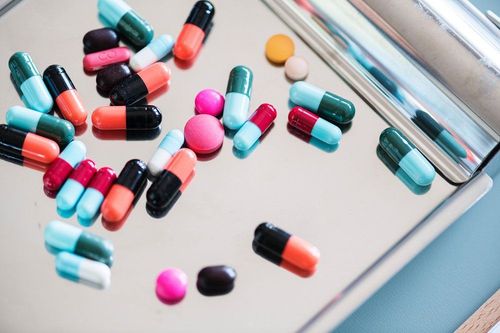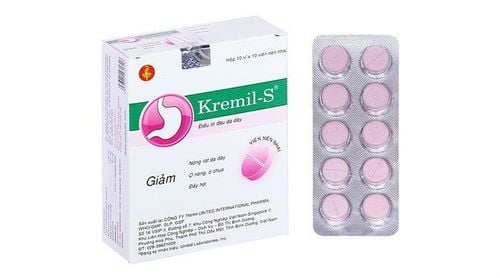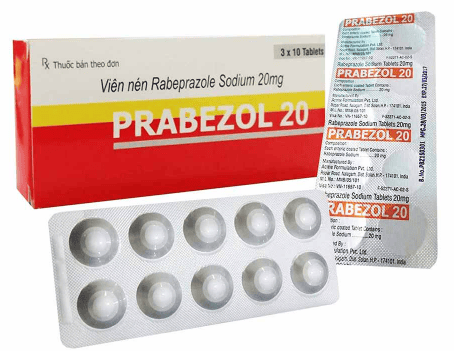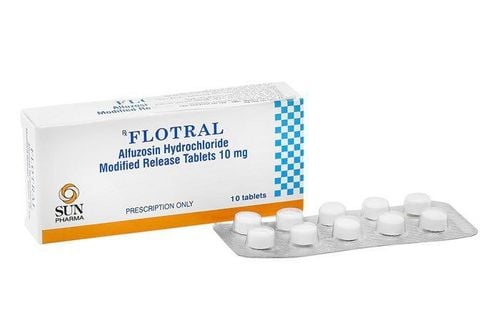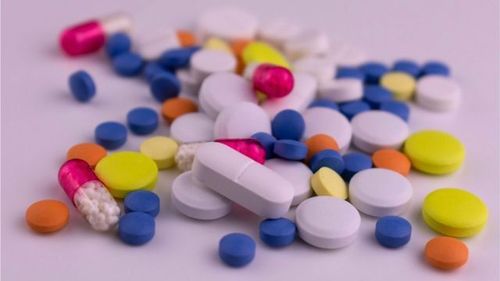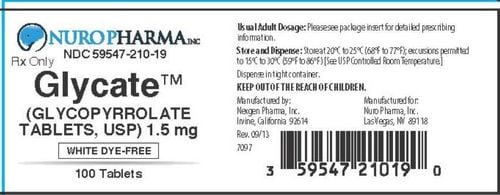This is an automatically translated article.
Rabfess medicine has the main ingredient Rabeprazole Sodium 20mg, belongs to the class of Proton pump inhibitors (PPIs). Rabfess is commonly used in the treatment of gastric ulcers, gastroesophageal reflux disease, etc. Let's learn more about Rabfess through the article below.
1. What is Raffess?
Rabfess drug is prepared in the form of lyophilized powder for injection, with the main ingredients including:
Active ingredient: Rabeprazole (in the form of Rabeprazole Sodium) 20mg. Excipients: Just enough for 1 vial of powder for injection. Mechanism of action: Rabeprazole Sodium is a derivative of Benzinmidazol, the drug does not have an anti-secretory mechanism of Acetylcholine or an antagonism of Histamine H2, but has an inhibitory effect on gastric acid secretion due to its specific inhibitory mechanism. enzyme H+/K+ - ATPase on the surface of parietal cells of the stomach. Therefore, Rabeprazole Sodium is classified as a gastric proton pump inhibitor (PPI) that blocks the final step of gastric acid formation.
2. What are the effects of Raffess?
Rabfess is indicated for the treatment of the following cases:
The patient used to take oral stomach medicine but can't take it now due to any reason. Gastroesophageal reflux disease (GERD) with ulcers or abrasions of the lining. Maintenance therapy after healing of gastroesophageal reflux disease (GERD). Progressive peptic ulcer disease with severe bleeding or erosion. In combination with antibiotics Amoxicillin and Clarithromycin in the treatment of Helicobacter pylori infection. Zollinger-Ellison syndrome. Prevention of acid aspiration in surgery. Injuries to the digestive tract mucosa due to Stress during intensive care such as burns, head injuries.
3. Contraindications of the drug Rabfess:
Hypersensitivity to any component of the drug Rabfess. History of allergy to other medicines containing Rabeprazole Sodium. History of allergy to other drugs of the gastric proton pump inhibitor (PPI) class. Pregnant or lactating women.
4. Dosage and how to use Rabfess
4.1. How to use Rabfess drug is not administered intramuscularly, only intravenous infusion. Mix the 20mg Rabfess powder vial with 5ml water for injection to achieve a concentration of 4mg/ml. Administer intravenously slowly over 5 minutes. Intravenous infusion: Dilute the above solution with 0.9% Sodium Chloride or 5% or 10% Dextrose to achieve a concentration of 0.2mg/ml. Time of intravenous infusion from 20 to 30 minutes. 4.2. Dosage Adults:
Benign progressive gastric - duodenal ulcer: Intravenous 20mg/time in the morning. Duration of treatment is 4-6 weeks or may be longer depending on the response of the patient. Gastroesophageal reflux disease - ulceration or abrasion: 20 mg intravenously once daily for 4 to 8 weeks. Maintenance in gastroesophageal reflux disease: Intravenous infusion 10-20mg/times daily for 12 months. Prevention of acid aspiration in surgery: 20mg intravenous infusion / time per day. Treatment of damage to the digestive tract mucosa due to Stress during intensive care such as burns, head injuries: Intravenous infusion of 20mg/time per day. Do not change the dose in patients with elderly or impaired renal function. Children:
The use of Raffess is not recommended due to the lack of clinical safety.
5. Notes when using Rabfess
Treatment with Rabfess drug with high dose or long term, can cause side effects such as:
Common: Bacterial infection, cough, sore throat, rhinitis, flu-like symptoms, nausea, diarrhea or constipation, abdominal pain, flatulence, unexplained pain, insomnia, headache, dizziness, backache, weakness. Uncommon: Dyspepsia, dry mouth, belching, restlessness, somnolence, myalgia, cramps, arthralgia, erythema, pruritus, chest pain, chills, fever, increased liver enzymes, urinary tract infection. Rare: Depression, visual disturbances, anorexia, gastritis, gingivitis, taste disturbances, pruritus, sweating, bullous reactions, hepatitis, jaundice, hepatic encephalopathy, nephritis interstitial, weight gain, neutropenia, leukopenia, thrombocytopenia, hypertension. Hyponatremia, gynecomastia in men, peripheral edema. The drug should be stopped when detecting the above symptoms after receiving Rabfess injection and promptly informing the doctor and medical staff for timely treatment.
Note the use of Rabfess in the following subjects:
It is necessary to exclude malignancy before using Rabbess for patients. Rabfess should be used with caution in patients with gastrointestinal infections caused by Salmonella, Clostridium difficile or Campylobacter. Rabfess should be used with caution in patients with hereditary galactose intolerance, glucose or galactose malabsorption or Lapp lactase enzyme deficiency. Pregnancy: According to the US Food and Drug Administration (FDA), there are no safety data on the use of Rabfess in pregnant women. Therefore, Rabfess is contraindicated in this subject. Lactation: There are currently no studies to show whether the active ingredient Rabeprazole Sodium in Rabfess can be excreted in breast milk. Therefore, in order to ensure the safety of breast-feeding infants, the use of the drug is contraindicated in this subject. Drivers or machine operators may experience side effects such as drowsiness, affecting alertness and concentration during work. Therefore, avoid using Rabfess before and during work.
6. Rabfess drug interactions
Interactions with other drugs:
Rabbess reduces the absorption of antifungal drugs such as Ketoconazole or Itraconazole. Avoid using Rabbess at the same time with drugs such as Delavirdine, Posaconazole, Erlotinib, Nelfinavir. Rabfess reduces the concentration and effect of: Atazanavir . Clopidogrel. Dabigatran. Etexilate. Dasatinib . Erlotinib. Indinavir. Iron salts. Mesalamine. Mycophenolate. Nelfinavir. Rabfess increases the concentration and effect of: CYP2C19, CYP2C8 substrates. Methotrexate. Saquinavir. Voriconazole. Above is an overview of the composition, uses, dosage and notes when using Rabfess medicine. In order to bring the best treatment results for themselves and their families, patients should be consulted and guided by the treating doctor.




